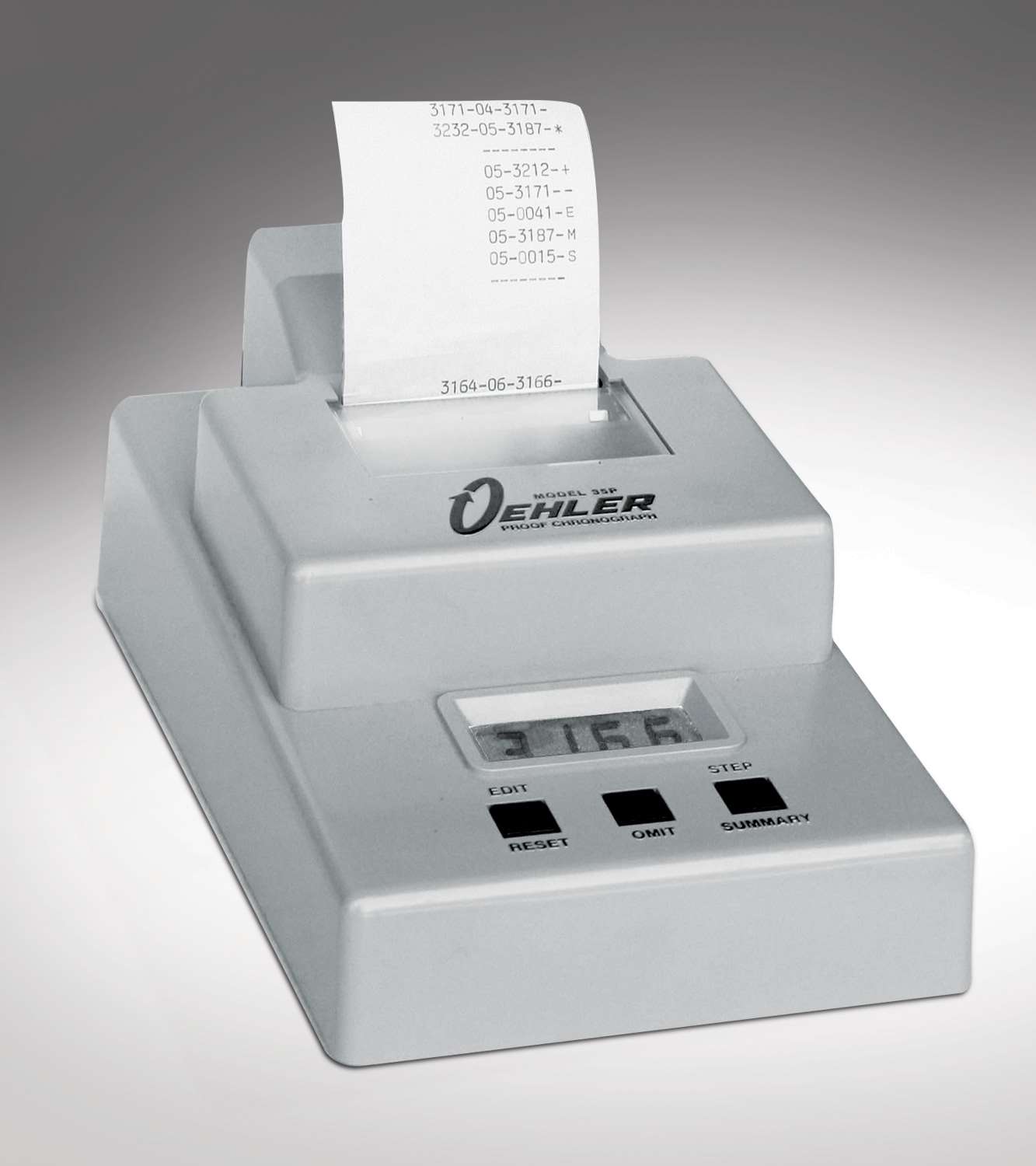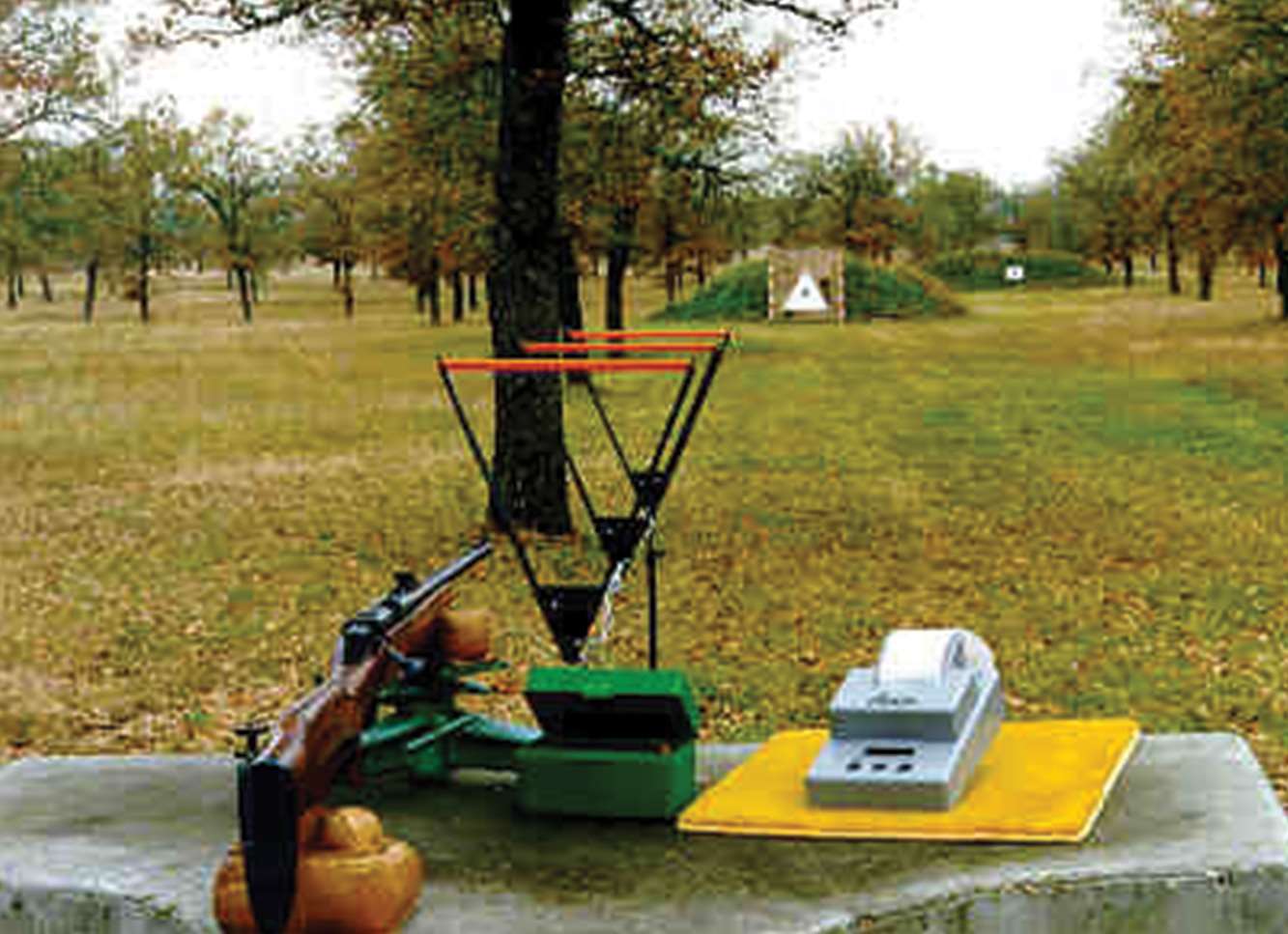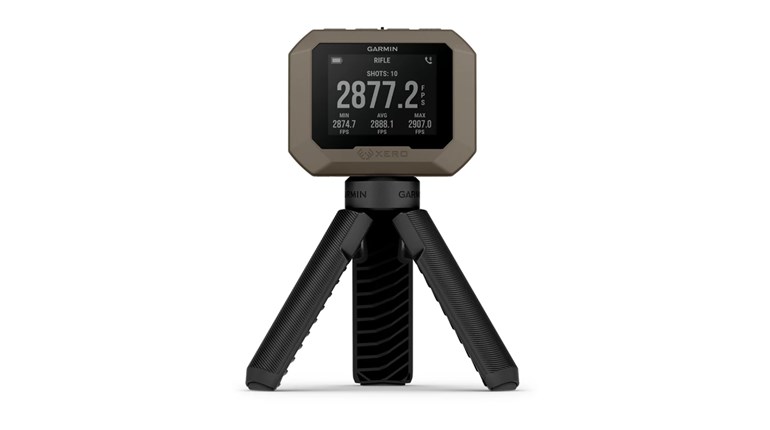
We sometimes get to play with context a little when it comes to “First Gear” content: Most commonly, that “first” is mighty obvious, as in new. Other times, it’s “first chance you get …,” or, now and again, “greatest hits,” “first rank” or “top shelf.” With the Oehler Research Model 35 Proof Chronograph, we default to this last, because this stalwart performer is anything but new (first offered in 1989).
Don’t confuse that, however, with it not being superb. Where it gets a little complicated is, “Why do I care?” and “What’s so nifty about the 35P?” Well, read on: We think this is an easy case to make.
In the big-picture sense, experienced shooters take for granted that ammo “chrono-ing” (measuring the speed of bullet travel) is a must-have capability, but it shouldn’t be a puzzle as to why all shooters don’t understand the necessity or significance. As long as firearms go “boom,” actions cycle, and targets are marked, it’s all the same, right? As that more seasoned shooter will then inform you—politely, we hope, but with varying emphasis—no. Not by a long chalk.What they know is that consistency is the soul of accuracy.
What they know is that consistency is the soul of accuracy. The best barrels, actions, sighting technologies and technique are largely for naught without good ammunition, and “good” in this context must begin with consistent velocity. Gravity is the single biggest factor in what makes this such a big deal. Velocity variations result in differing flight-to-target times, and give gravity relatively more (or less) time to “bend” the bullet path back toward Mother Earth. Accuracy, therefore, suffers. Wind, and even the spin of the earth have effects, too, but they’re generally tiny by comparison. All, though, are a function of velocity. Knowing those velocities is hence a crucial comparator for many ballistic considerations.
Enter Oehler (pronounced “a-ler,” by the way). The 35P will come to you packed in a rifle case, and this is a first departure from many other chronographs: It looks complicated. We’d combat this impression with a Web reference, this specifically, and to nearly 20 years of our own use. We’ve never needed more in the way of instruction than those paltry 195 words (though the unit comes with a very complete manual, just in case).

In actuality, all the contents of that case resolve into only two basic components—a retro-looking controller (with three buttons, three cable inputs, a battery access panel, display and a plain paper 2.25” printer), connected via cable to three “skyscreen” sensors. It’s with the sensors that we get to a second and more constructive departure for the Oehler—three skyscreens instead of two.
The third screen gives the Oehler its patented (#4,845,690, if you must know) “Proof Channel.” That is, indeed, technical, but with a point: Due to the understandable intricacy of “seeing” the bullet as it moves over the sensor, mismeasurement is a distinct and eventually unavoidable possibility. Have enough of these on a two-sensor machine—even one in a dozen (remember, each shot must be “seen” twice)—and the accuracy and usefulness of your measurements can be lost or skewed in a hurry. The tricky part is knowing when this occurs. An un-see is easy diagnose, a misread, far trickier.With the 35P, that third skyscreen sees each shot again, and makes a unique comparative (second) measurement.
With the 35P, that third skyscreen sees each shot again, and makes a unique comparative (second) measurement. If the two disagree beyond narrow limits, the shot is flagged for user-selectable omission in the calculations of high, low, extreme spread, average and standard deviation of the shot group. Individual shot measurements are displayed and printed as they occur, and calculated values presented upon request at the end of whatever number of shots you define as a string (they’re also printed by the plain paper printer—no fading as with thermal ink/paper).

As slick (and fabulously reliable, in our experience) as the “tech” of the 35P is, nifty numbers are rarely sufficient to get folks to really appreciate the value of a chronograph. Where the rubber meets the road is often a matter of demonstration, and not merely explanation.
Oddly, this is surprisingly dramatic for pistol shooters. If you’re lucky enough—and in many cases it’s just that; luck—to have a steady source of ammunition that suits a few favored handguns well, chronography may never be a need. But if the last few years have taught us anything, it’s that a notion of ammunition as a “commodity item” may be seriously flawed. If two boxes of like-labeled ammunition are from different manufacturing lots, they may still exhibit quite noticeable performance differences: Felt recoil and point of impact may change even at handgun ranges due to the components available when each batch was manufactured. While there’s no fix for the non-handloader here, at least “lotting” can be done when such ammo is chrono’d—better performing ammo set aside for serious applications, worse for general practice or plinking.
Rifle shooters are more likely to understand and care about the velocity differences only a chrono can decisively, quantitatively reveal. Partial inches can grow rapidly to feet of essentially uncontrollable aiming error if velocity varies enough. Another variable is more generally discernable in rifles, too: Just because a particular 180-grain .30-06 loading and bullet performs well in rifle “A” is no guarantee whatever that it will perform well in rifle “B.” Modern manufacturing techniques have reduced this effect somewhat, but on occasion the variations can still be alarming on a target and disastrous in the field.
It may seem an obvious notion, but handloaders will get the most out of a chrono the, ahem, caliber of an Oehler 35P. In fact, there’s an argument to be made that a good chrono should be part of your cost “spec” if you’re considering reloading at all. For the pistol shooter, not just accuracy is at stake (though shorter distances reduce this benefit somewhat), but also what may be an unexpected universe of “feel”: Properly matched, bullets and powders can improve shooting comfort to an almost unimaginable—until experienced—degree, and yet allow superb accuracy to be maintained.… Even in rifles, big controllability gains are possible with proper component matching, but only a chrono keeps the essential accuracy and repeatability in the overall picture.
For the rifle handloader, accuracy remains the undisputed grail, though a chat with any top-level 3-gunner may yield a pistol-like response. Even in rifles, big controllability gains are possible with proper component matching, but only a chrono keeps the essential accuracy and repeatability in the overall picture to the required degree.
A last consideration may commend a 35P as well, though it comes from an odd bearing—getting the most from modern, rapid acquisition/adjustment reticles and optics. If you have an optic that claims to offer some form of “bullet drop compensation,” you’ve probably discovered just how unsatisfactory it proves for real precision. If you can find the exact ammo that your BDC is laid out for, and if your barrel length is the same, you may get in the neighborhood. But whether it’s the micro-structure of our barrel metal, the humidity, our laundry detergent, or the phase of the cotton-pickin’ moon we couldn’t say, but our luck has never been remotely good in this regard. Only accurate velocity knowledge will make these reticles/optics work. But in concert with a ballistic software program (like Oehler’s own Ballistic Explorer), you can use that precise velocity data to construct range cards on a optic-by-optic, rifle-by-rifle, and load-by-load basis, and know within fractions of an inch at astonishing distances what those stadia marks finally, really mean for your rifle and your shots. Sublime.
As to the Oehler 35P, we concede it’s at a price point where it wasn’t our first chronograph. Nearly 20 years down the road, however, it’s at a performance point where it’ll almost certainly be our last.
Visit Oehler at oehler-research.com.


































